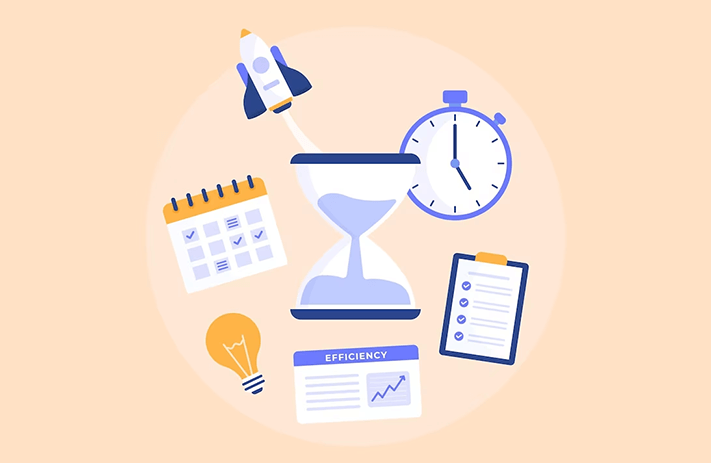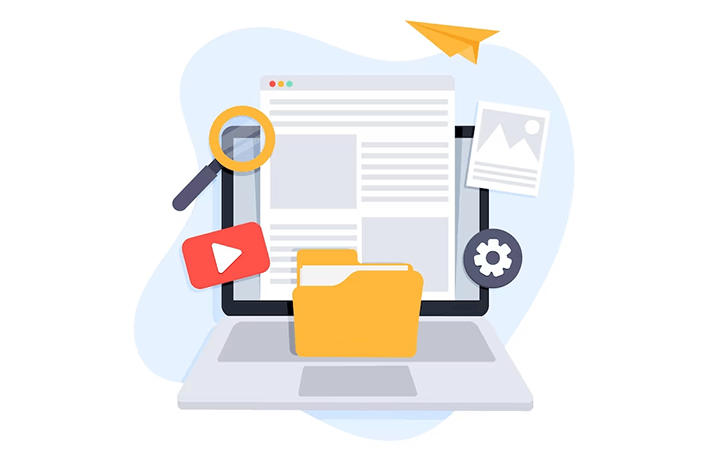
Click the button to start reading
The Dawn of Work-Life Integration: A New Rhythm to Your Daily Dance
Ever found yourself caught in a mental tug-of-war, grappling with how to juggle your professional responsibilities while still making time for the personal activities that light up your life? You’re not alone. It’s akin to trying to dance to two different tunes simultaneously.
But wait a minute, what if there’s a different rhythm to this dance? A rhythm that doesn’t involve teetering on the tightrope of work-life balance, but rather allows your work and personal life to groove together in a harmonious jig?
Welcome to the world of work-life integration. It’s a fresh perspective on an age-old problem, challenging the traditional “work in one box, life in another” mindset. Instead, it’s about allowing work and life to flow together, each enriching the other rather than vying for your time and attention.
In this article, we’re going to delve deep into work-life integration. We’ll explore what it truly means, how it squares up against work-life balance, and why it might just be your ticket to a happier, less frazzled life. By the time we’re done, you’ll have a solid understanding of work-life integration and some handy strategies to make it work for you.
So, are you ready to shake up the way you juggle work and life? Let’s get started.

What’s Work-Life Integration?
You’ve probably heard the term “work-life integration” buzzing around lately. But what does it really mean?
Think of it like this: Instead of trying to keep your work and personal life in separate compartments, you’re blending them together. It’s like making a smoothie out of your daily activities.
You’re not trying to keep the strawberries (work) and the bananas (personal life) separate. Instead, you’re blending them together into a delicious mix that’s both satisfying and nourishing.
But how does this differ from the traditional concept of work-life balance? Well, work-life balance is more like a seesaw. You’re constantly trying to keep your work (one side of the seesaw) and your personal life (the other side) in balance. But as you probably know, keeping a seesaw perfectly balanced is no easy task.
The Great Debate: Work-Life Integration vs. Work-Life Balance
Now, let’s dive into a friendly debate: work-life integration versus work-life balance. Which one is better?
Well, it’s not really about one being better than the other. It’s more about what works best for you.
On one hand, work-life balance has its perks. It allows you to draw clear boundaries between your work and personal life. You clock out of work, and you’re done for the day. You can then focus on your personal life without any work-related distractions. Sounds pretty good, right?
But on the flip side, work-life balance can also be a source of stress. What if a work crisis happens while you’re on your “personal time”? Or what if a personal issue arises during your “work time”? The rigid boundaries of work-life balance can sometimes feel like walls, trapping you in one compartment or the other.
That’s where work-life integration comes in. It allows for more flexibility. You can attend to personal matters during your workday or attend to work matters during your personal time. It’s all about finding a flow that works for you.
But remember, work-life integration isn’t a free pass to work 24/7. It’s about integrating work and life in a way that enhances your well-being and productivity, not diminishes it.
So, which one is right for you? Work-life balance or work-life integration? The choice is yours to make. But no matter what you choose, remember this: It’s all about creating a life that feels good to you, not just one that looks good on paper.

Hypothetical Scenarios of Work-Life Integration
Let’s paint a picture or two to illustrate what work-life integration might look like in action.
Imagine Sarah, a project manager and a mom to two energetic toddlers. Her day starts early with a quick scan of emails and setting up her team’s tasks for the day. Mid-morning, she hits pause on work to engage in a fun play session with her kids and whip up their lunch.
Post-lunch, she’s back at her virtual desk, attending meetings and ticking off tasks. Late afternoon, she logs off to immerse herself in quality time with her kids. Once they’re tucked in bed, she might log back in to wrap up any remaining work tasks or plan for the next day.
Then picture Mike, a freelance graphic designer who’s also a fitness enthusiast. He loves kick-starting his day with a refreshing run in the park.
Back home, he showers, grabs breakfast, and then dives into his design work. Mid-afternoon, he takes a break for a workout session at his local gym, then gets back to his creative zone. Come evening, he logs off to unwind, cook a leisurely dinner, and catch up on his favorite shows.
These scenarios showcase work-life integration in action. Notice how Sarah and Mike are weaving their work and personal activities throughout the day, rather than keeping them in separate boxes. They’re shaping their work schedules around their personal needs and preferences, not the other way around.

The Path to Harmony: Achieving Work-Life Integration with Less Stress, More Productivity
So, how can you navigate your way to work-life integration? Here are a few pointers to guide you:
- Embrace Flexibility: Unlike a rigid 9-to-5 schedule, work-life integration calls for flexibility. It’s about tailoring your work schedule to fit your personal rhythm.
- Draw Boundaries: Integration doesn’t mean erasing boundaries. It’s crucial to set clear boundaries to ensure work doesn’t spill over into your personal time and vice versa.
- Keep Communication Lines Open: If you’re employed, have a chat with your employer about your preferred work schedule and any flexibility you might need. Many employers today are open to flexible work arrangements.
- Prioritize Self-Care: Work-life integration isn’t a free pass to work round the clock. It’s about finding a rhythm that allows you to fulfill your professional commitments while also taking care of your well-being. So, don’t forget to weave self-care activities into your daily routine.
- Leverage Technology: Use technology to your advantage. There are numerous apps and tools available that can help you manage your tasks, schedule your day, and stay organized. But remember, technology is a tool, not a master. Use it wisely.
- Practice Mindfulness: Being present in the moment can help you enjoy both your work and personal life more fully. Whether you’re working on a project or spending time with your loved ones, give your full attention to the task or person at hand.
- Seek Support: Don’t hesitate to seek support when you need it. Whether it’s delegating tasks at work, hiring help for household chores, or leaning on your loved ones for emotional support, remember that you don’t have to do it all alone.
Work-Life Integration in the Remote Work Era
Let’s face it, the world of work is changing. The cubicle farms are giving way to home offices, and the daily commute is often just a walk from your bedroom to your desk. Yes, the remote work era is here, and with it comes a golden opportunity to embrace work-life integration.
In this new landscape, the rigid boundaries of the traditional 9-to-5 workday are dissolving. You’re no longer confined to working in a specific place at a specific time. You have the freedom to weave your work and personal activities together in a way that suits you best.
And it’s not just about convenience. Studies suggest that work-life integration can lead to increased productivity, higher job satisfaction, and improved mental health. So, it’s safe to say that work-life integration is not just a passing trend, but a key part of the future of work.

Employers, Take Note: How to Support Work-Life Integration
If you’re an employer, you might be wondering how you can support work-life integration in your organization. Here are a few key areas to focus on:
Embrace Flexibility
Allow your employees to have flexible work schedules. This means trusting them to manage their time effectively and deliver their work on schedule. Flexibility is one of the cornerstones of work-life integration, allowing employees to weave their work and personal activities together in a way that suits them best.
Promote a Healthy Work Culture
Encourage your employees to take breaks, avoid overworking, and make time for their personal life.
A healthy work culture is not just good for your employees, but also for your business. When employees feel that their personal life is valued and respected, they’re likely to be more engaged, motivated, and productive at work.
Regular communication and touchpoints are essential in this regard. Whether it’s a weekly team meeting, a monthly one-on-one, or a daily check-in, make sure you’re keeping the lines of communication open and providing your employees with the support they need.
Provide the Right Tools
Equip your employees with the tools and technology they need to work effectively from anywhere. This could include project management tools, communication platforms, and secure remote access to work systems.
One such tool is Teamly, which offers professional checklists and Standard Operating Procedures (SOPs) for virtually any business. With Teamly, your team can easily establish best practices and ensure that things are done the right way, each and every time. You can use the templates as-is or customize them to fit your needs.
Plus, Teamly’s easy-to-use SOP Builder allows you to create your own SOPs from scratch. By providing the right tools, you’re enabling your employees to integrate their work and personal life more seamlessly.
Measure Effectiveness, Not Hours
Shift your focus from the number of hours worked to the quality and effectiveness of the work done. This encourages employees to work smarter, not longer and supports the concept of work-life integration. After all, it’s the results that matter, not the time spent at the desk.
Ease the Transition
Help your employees transition to work-life integration by providing training, resources, and support. This could include workshops on time management, resources on mental health, and support from team leaders and managers. Remember, change can be challenging, so it’s important to support your employees through this transition.
Conclusion: Embracing the Work-Life Integration Journey
Work-life integration is all about weaving your work and personal life together in a way that enhances your well-being and productivity. It’s about flexibility, boundaries, communication, self-care, and support. And most importantly, it’s about finding what works best for you.
As we navigate the remote work era, work-life integration is becoming increasingly relevant. It’s not just a passing trend, but a key part of the future of work. And for employers, supporting work-life integration can lead to happier, more engaged employees, and, ultimately, a more successful business.
So, why not start your work-life integration journey today? Experiment with the strategies we’ve discussed, tweak them as needed, and find your own path to work-life harmony. Remember, there’s no one-size-fits-all approach. It’s all about finding what works best for you.
















